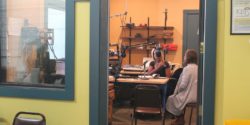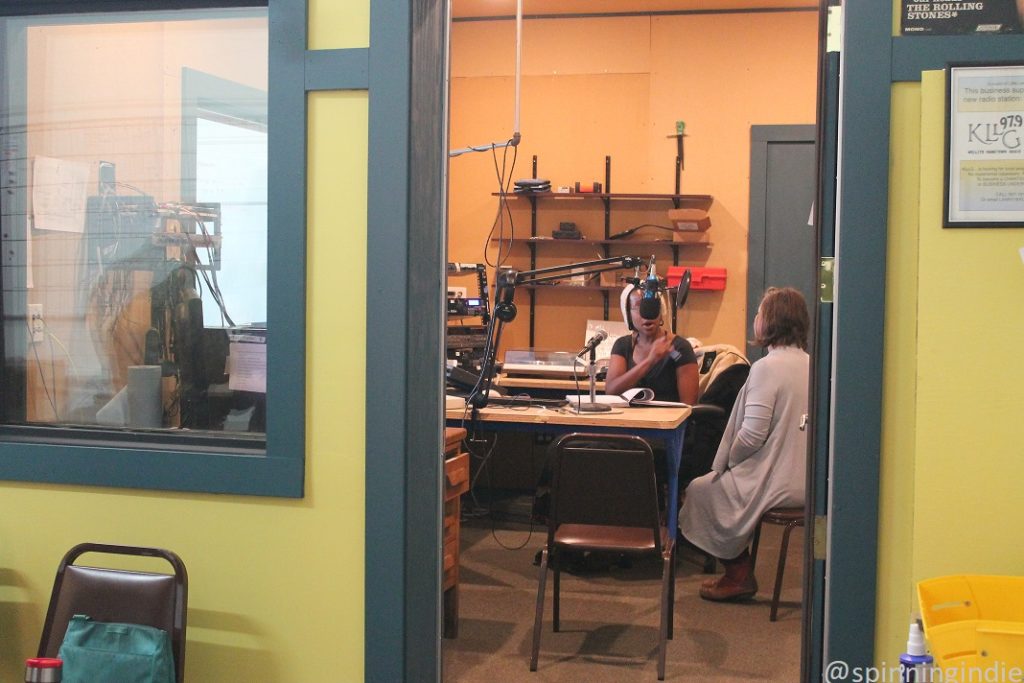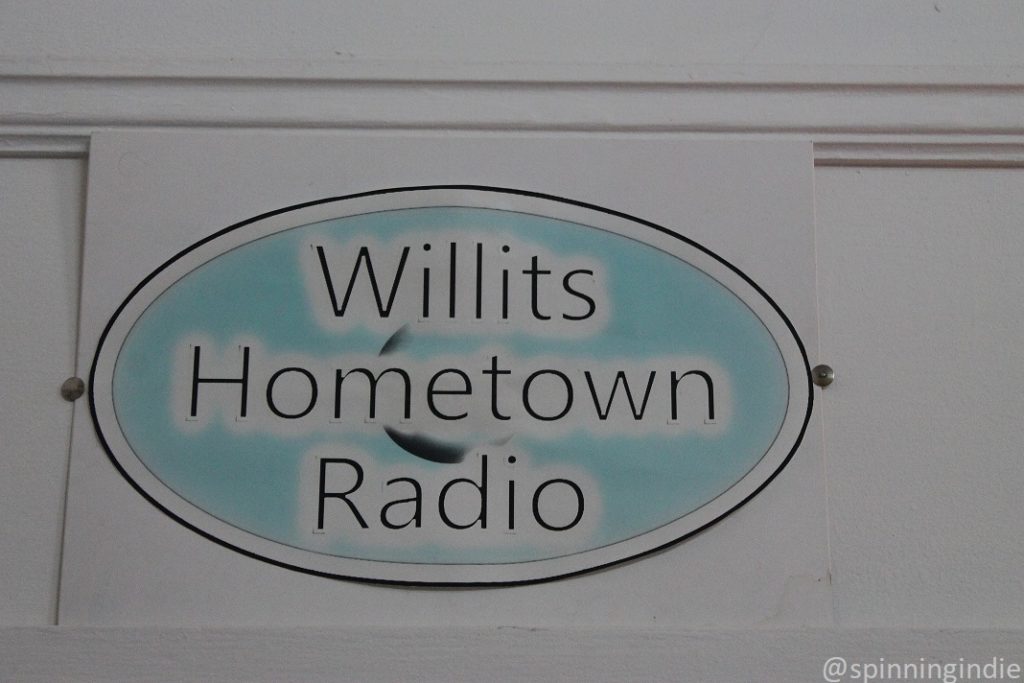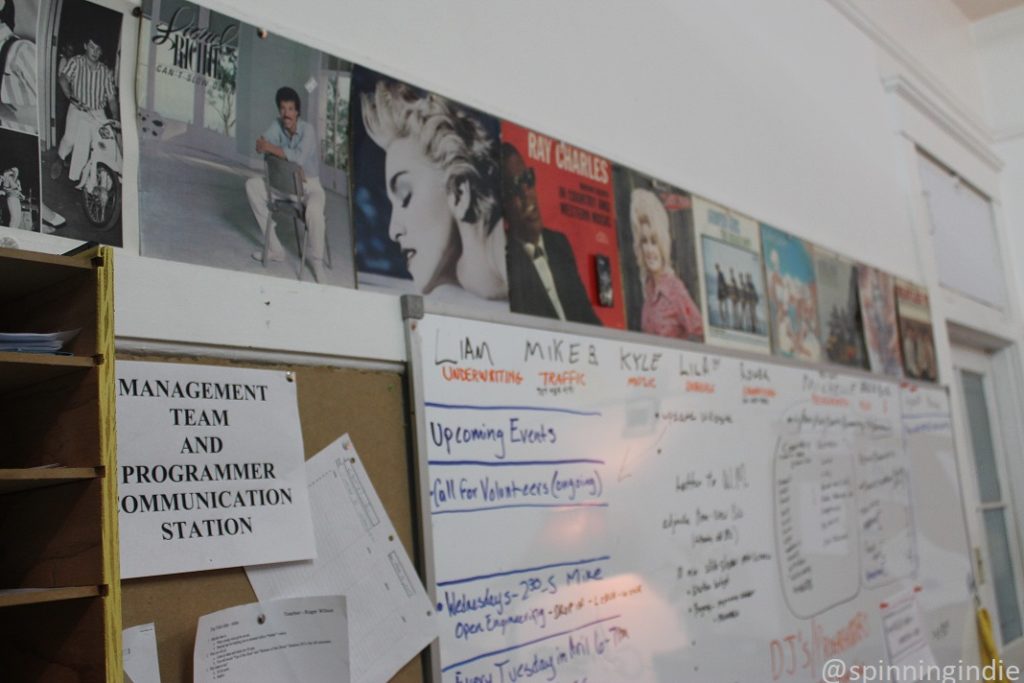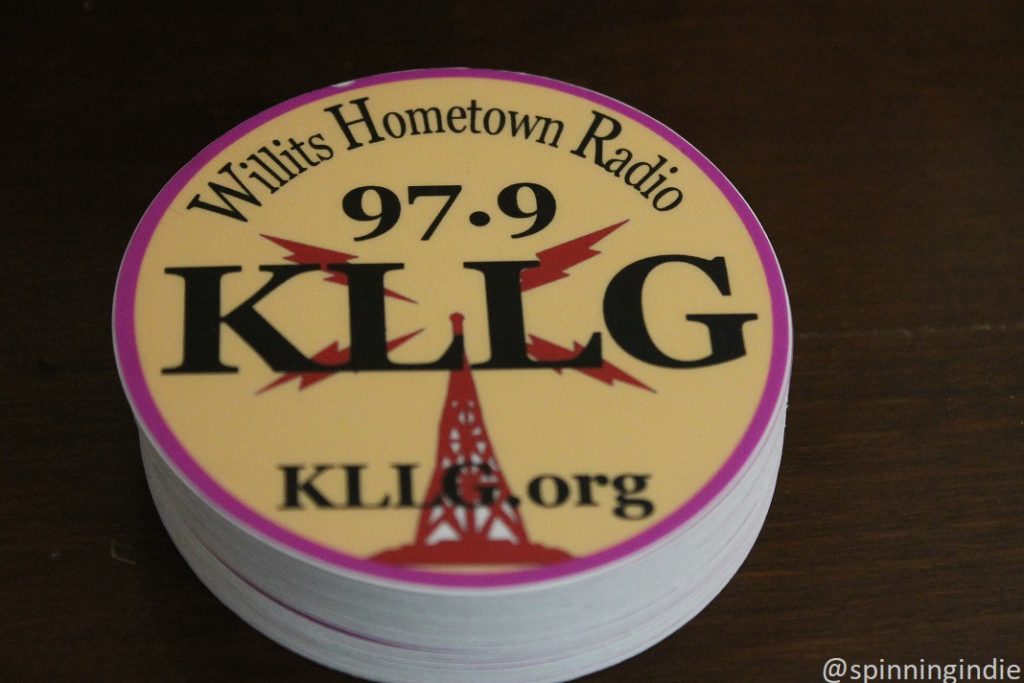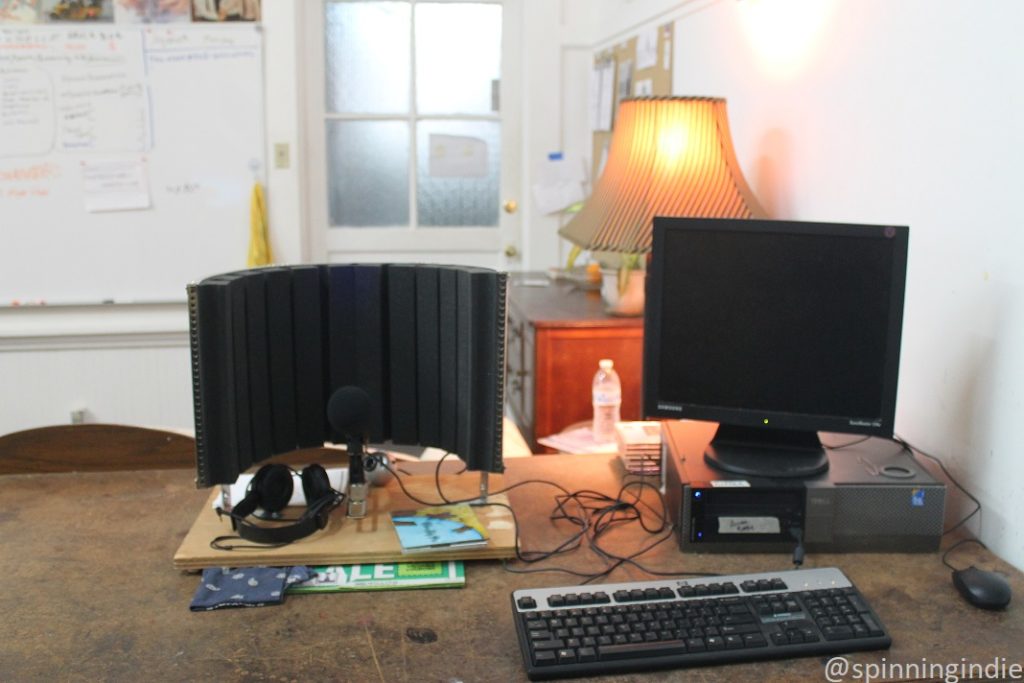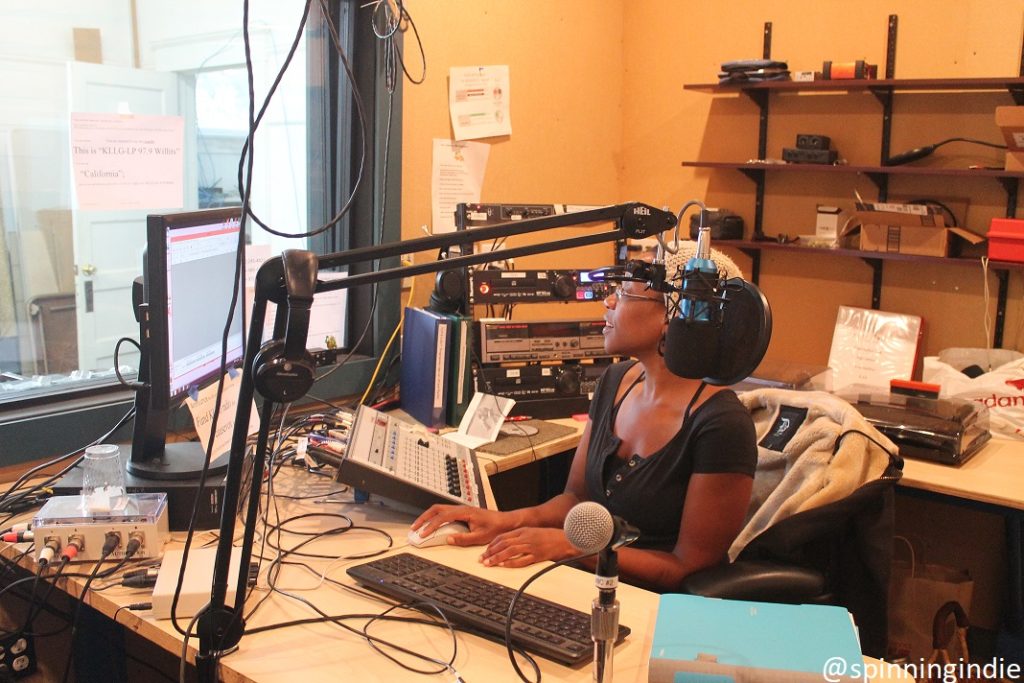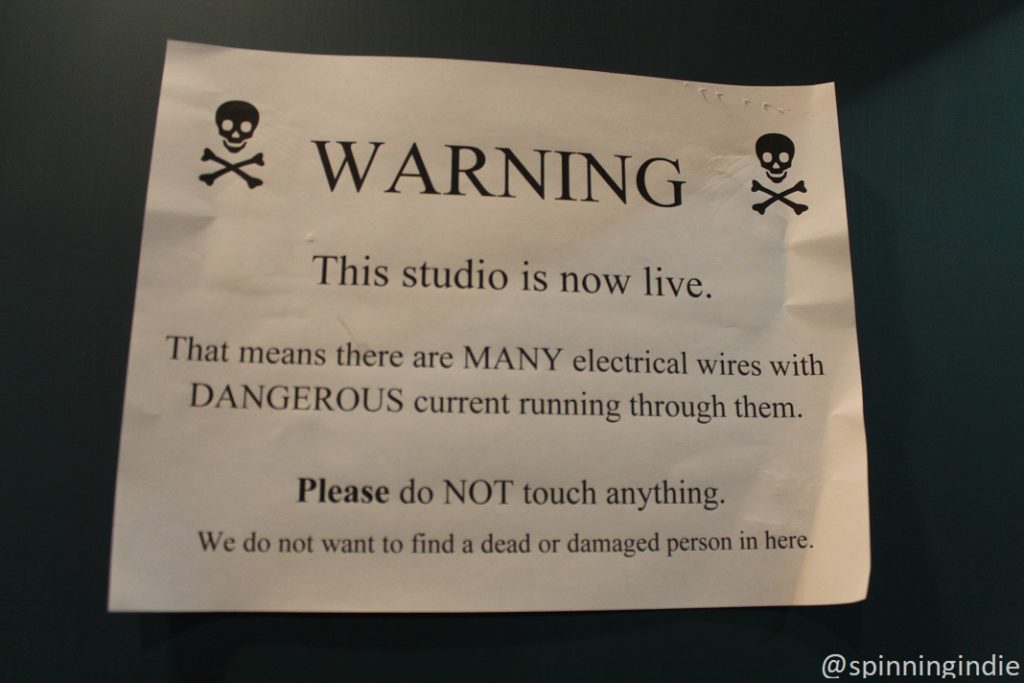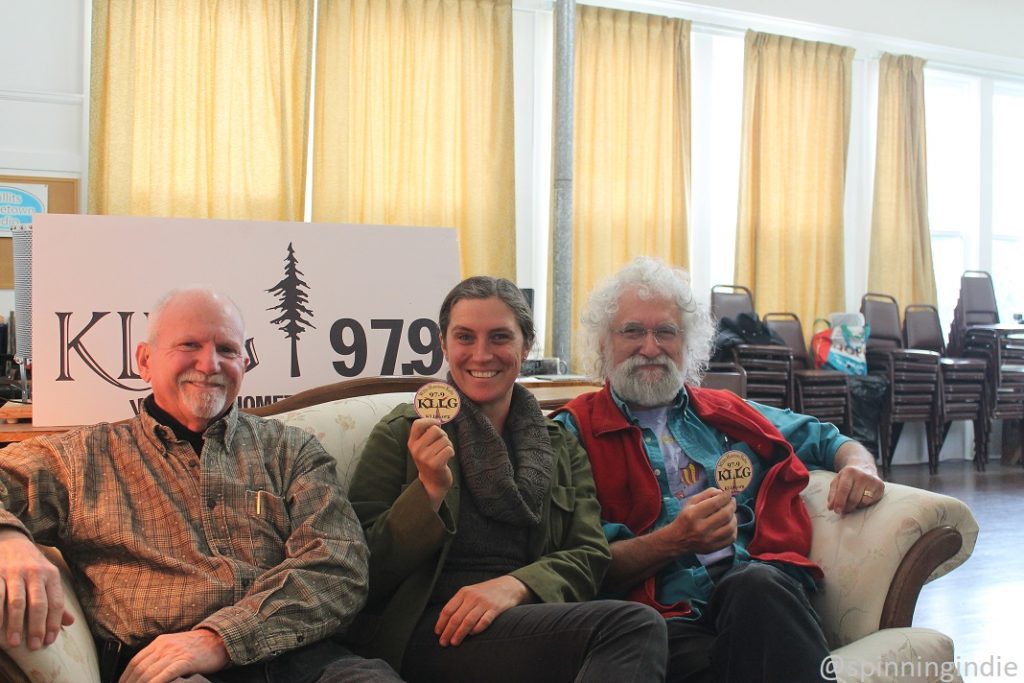Mendocino County has a bounty of new community radio stations thanks to the recent low power FM (LPFM) application window and I was excited to get to visit one of those stations: KLLG-LP in Willits, California earlier this year. After spending the night near the coast, I headed inland, driving on a windy country road through the forest to Willits. On my way, I passed campgrounds, a horse camp, logging operations, and vineyards before arriving at the Little Lake Grange, the non-profit that holds the FM license for KLLG. With headquarters in a beautiful, 100-year-old school building, it’s an idyllic place for a community radio station. And, as last month’s devastating fires in Mendocino County illustrated, hyper-local local radio can be an important lifeline during a crisis, particularly in small, rural communities.
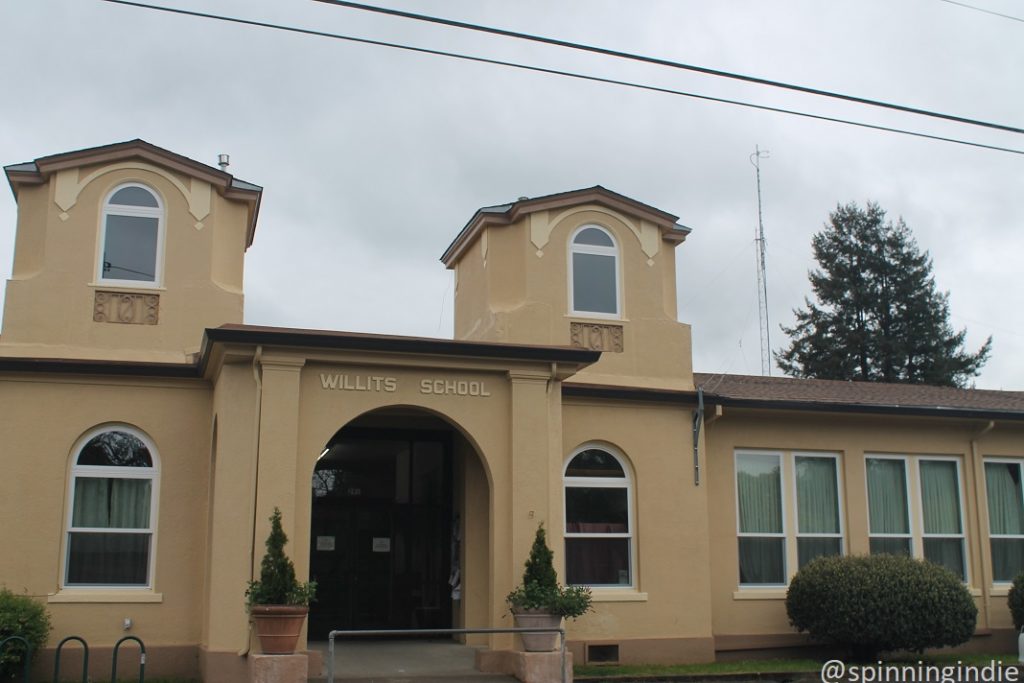
The Little Lake Grange in Willits, CA: home to LPFM radio station KLLG-LP. Photo: J. Waits/Radio Survivor
When fires came roaring through the Redwood Valley area just south of Willits in early October, KLLG-LP did its best to keep listeners informed. KLLG’s former Program Director Michelle Cummins told me over email that the Redwood Complex fire was about 8 miles from the station. She recounted that:
Remarkably, we did not have any programmers who lost their homes, however, we all know people who did. We had many programmers who were in the mandatory and voluntary and evac zones. In the first hours of the fire incident, there was no internet or cell phones available. We definitely learned the importance of the relationship of a local radio station with all of the agencies that are first responders.
Volunteers stepped up to report on the fires. According to Willits News,
When cell phone towers were damaged and all cell phone communications (with the exception of satellite phones), and internet were unavailable over a two day period as a result of the Mendocino Lake Complex fire, KLLG and KZYX Public radio became the local sources of information in Willits.
Mike Burgess, Lauren Jaslow and Liam UiCearbahil were some of the volunteer staffers manning the station and attempting to keep residents informed during the emergency.
UiCearbahil in particular, came in to do the night shift from 11 p.m. to sunrise and relayed emergency and evacuation updates from CalFire, the Mendocino County Sheriff’s Office and other sources throughout the night. Cummins said people told her they were very grateful to have his comforting familiar voice getting them through the confusion when the internet was down.
Having launched just a year prior, in September 2016, KLLG-LP had not faced this scale of an emergency. Programmers shared information about the fires, but had a number of challenges, including lack of internet access and road closures. Cummins said that the station learned a lot and offered advice for other community radio stations in order to better prepare for this type of disaster:
Tips for other LPFM stations would definitely be to host some kind of…open forum where you invite the first responder agencies such as highway patrol, sheriff, police department, fire departments, to come and learn about what the station can do for them and how they can use the station and view it as an asset to the community [and] the agencies. Being proactive is very important. Also, when reporting, definitely stick to the facts, use a calm and positive tone, [and] record and document everything. It’s a good idea to have a map of the area in the station as well.
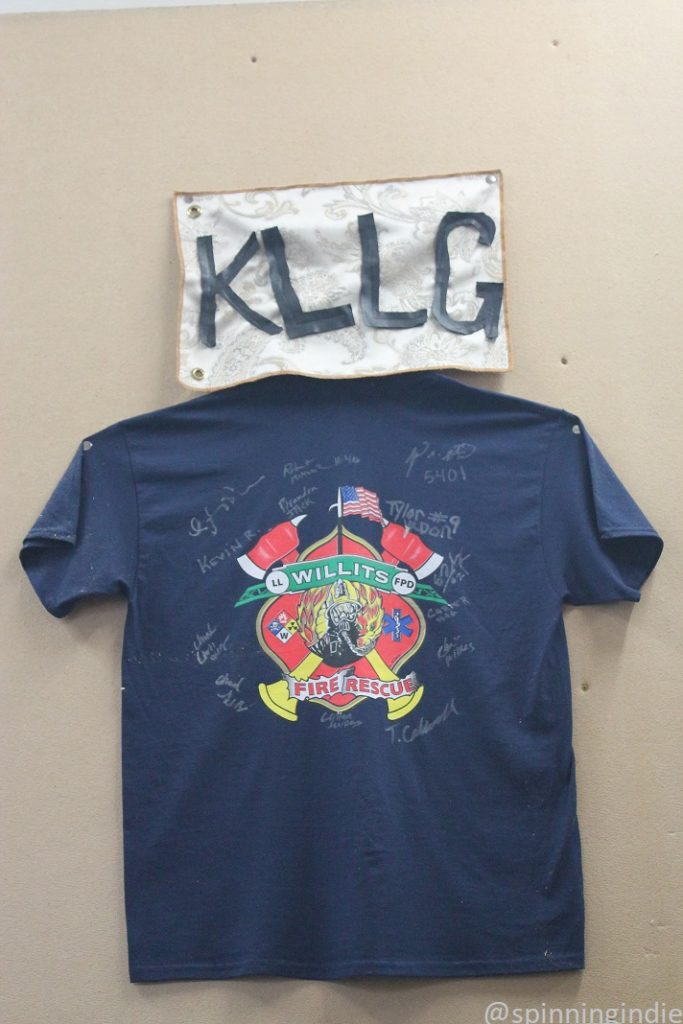
Signed Willits Fire Rescue T-shirt on wall of KLLG-LP in April, 2017. Photo: J. Waits/Radio Survivor
Cummins added, “I am very proud of our station, KLLG, for the support that we were able to offer our community in the week of this disaster. We had volunteers on air 24 hours a day for the first 72 hours and continued playing updated messages throughout the incident. The community has shown a lot of support and validated the importance of the station in times of disaster and in times of peace.”
All of this support must be particularly gratifying since KLLG is a very young station. Whereas many other Mendocino County towns have community radio stations (including LPFM stations in Covelo, Laytonville, Ft. Bragg and Ukiah), Willits was one of the last to hit the airwaves.
Founder and former General Manager Lanny Cotler was instrumental in getting KLLG-LP off the ground and has been following the station’s progress. Over email he provided more back story about the station, telling me that he wanted to bring community radio to Willits. Cotler elaborated, “I saw the narrow window the FCC was offering to obtain one of a limited number of LP licenses, learned that rural areas with one application are a good bet to be granted the license, and it hit me how a hyperlocal station would be a great boon to a small community…”
Cotler remarked, “The vision was that in order to survive our community had to become more RESILIENT. More self-reliant, more able for all sides within the community to communicate with each other—rich, poor, old, young, gay, straight, left, right. I wanted to set up a means of communication, a platform to do this. That’s what sold all sectors of this town on backing the idea of a low power FM radio station.”
With the recent fire, he acknowledged that “KLLG rose to the occasion,” adding, “In a sense, we prove[d] ourselves to the town. We made mistakes. Many behind the mic didn’t know all the protocols, but we were for a few days the only means for citizens to get info on what was happening.”
When I met up with Cummins and other station volunteers back in April, we talked a lot about community, which is at the heart and soul of the station’s parent organization and landlord, The Little Lake Grange. Part of a large, national fraternal organization for farmers that dates back to 1867, the Grange, was historically a place where folks might share tools and farming skills, according to Cummins. The Little Lake Grange was founded in 1938 and was “primarily a farming organization into the 1950’s” that “gradually transformed itself into a community organization focused on the life of the Willits community,” states a Little Lake Grange brochure.
A longtime Grange member, Cotler had his eye on the Grange building as an ideal spot for a radio studio, so approached the organization to be the sponsoring non-profit for the new LPFM. He also found synergy between the goals of the Grange and the new community radio station, explaining, “Since the goal of the Grange is to serve our community by making it more resilient, I wanted a radio station that would dedicate itself to that purpose: strengthening our community’s resiliency!”
Farming, food and community are still a vital part of the ethos of the Little Lake Grange. Today, the Little Lake Grange hosts numerous community events, including pancake breakfasts, concerts, film series, and a farmers market. It helped to establish a nearby farm school and also houses local grains in silos behind its building. Cummins added that Willits is an “active agrarian community.”
One benefit for KLLG is that its location within the Little Lake Grange building allows for easy access to its auditorium, which has a direct line to the radio station’s studio. This proximity has allowed the radio station to broadcast from various events, including pancake breakfasts. Focusing on locally-produced programming, the station was working to train programmers and build out its schedule when I visited in April, just a few months after the station first started running live shows. At the time, the Willits LPFM radio station had around 18 live shows a week, comprising 28 hours of the weekly schedule. Around sixty folks had gone through programming training by early April, with at least 20 more in the queue. An automated mix of music airs when there is no live show. By early November, KLLG was up to 30 programmers producing a total of 68 hours a week of locally-produced content.
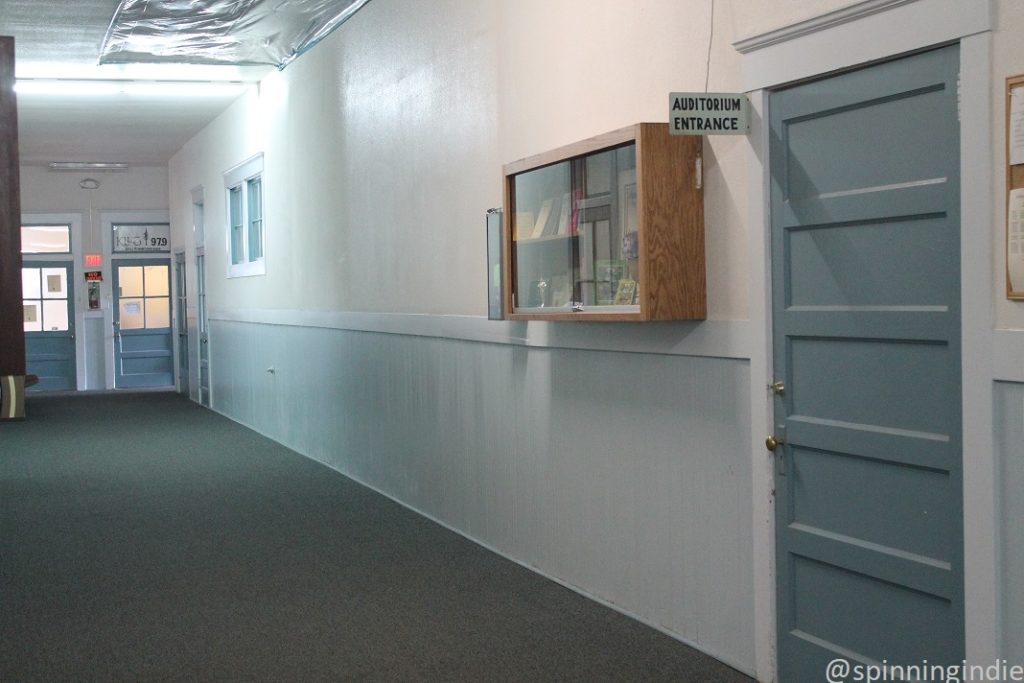
KLLG-LP entrance in the distance, just down the hall from Little Lake Grange auditorium (right side of photo). Photo: J. Waits/Radio Survivor
The programming mix today includes a variety of music and talk shows, with music shows focused on reggae, local music, electronic music, bluegrass, blues, Americana, and more. Talk shows run the gamut from “Baby Talk” (birth stories) to “Steve on Sports” (sports talk). One of the more unusual shows, “BiPolar Express,” is hosted by Skunk Train (a historic train that runs through the redwoods from Ft. Bragg to Willits) conductor/train singer Greg Schindel. On the show he plays music and brings in a range of guests. Cummins explained that part of what makes the show unique is that, “he has two personalities and they talk to each other on the show.”
While KLLG has a small collection of vinyl records and CDs, most DJs bring in their own music to play, typically via CDs, vinyl records, cassettes, and digital files. During my visit, Chief Engineer Roger Wilson joked that the station has “one and a half turntables,” as he was working to fix a persistent hum emanating from one of them. The building’s vintage electrical system and 14-foot ceilings have presented various challenges for the station, yet much attention was put into the construction of KLLG’s free-standing, thick-walled studio within the former schoolhouse classroom space. Wilson, along with volunteers, did the majority of the work to build the studio and Cummins and others reminisced about crawling under the building in order to complete a few different tasks.
As she passes the torch to new Program Director Lauren Jaslow, Cummins shared that much has been accomplished in the past year, from creating procedures and training programs to developing plans for underwriting and fundraising. She pointed out, “Year two is about developing all of those systems” that have been put in place, particularly in the areas of “programming, engineering, and development…”
While the station has accomplished a great deal already with a tiny volunteer staff, KLLG’s Finance Director Bob Fry told me that the station could accomplish even more with additional volunteers. Projects on the wish list require extra engineers (including folks who can simply run a show for tech-wary hosts), traffic managers (to schedule and run syndicated shows), and marketing experts to help get the word out about the station. Fry relayed that the station has the potential to bring together residents from their diverse community and that he’s already felt inspired by listener response to KLLG.
Wilson reflected on the group effort required to get KLLG up and running, recounting that, “I’m used to building and making anything, but to have a team…who haven’t built a radio station before…to step up and say ‘this sounds like a good idea’ and we’ll learn all this esoteric voodoo that’s necessary to make something happen in spite of whatever noise gets in the way of us…For them to step up and put the effort in, separate from their regular lives and make it happen, it is…wonderful to see…I am delighted.”
Thanks to everyone at KLLG-LP for the warm welcome, including Lanny Cotler who reached out to Radio Survivor from the very beginning and to Michelle, Bob, and Roger for taking the time to speak with me during my visit.

